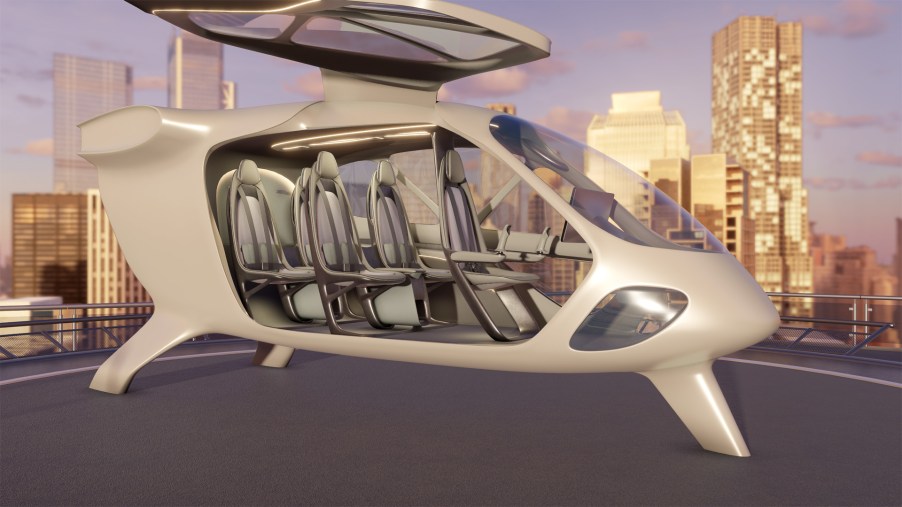
Here’s Hyundai’s Flying Taxi Cabin: Are You Ready To Ride?
With the establishment of Hyundai’s Supernal division, zero-emission air transportation is just around the corner. Part of Supernal’s mission is to create personal flying cars. But a large part is for manufacturing flying taxis, based on vertical take-off and landing (VTOL) developments. Hyundai is developing the planned flying taxi service now. Hyundai wasted no time showing off the latest link in the chain, the cabin.
The 2022 Farnborough International Airshow is happening now in the U.K. Hyundai chose it to debut its Supernal division’s cabin concept for the air taxi. There’s seating for five, with the theme being based on a butterfly. The methodology is that a butterfly has a light and sturdy structure, so the interior designers are taking cues from the colorful winged insect.
Hyundai is using biomimicry for its flying taxi
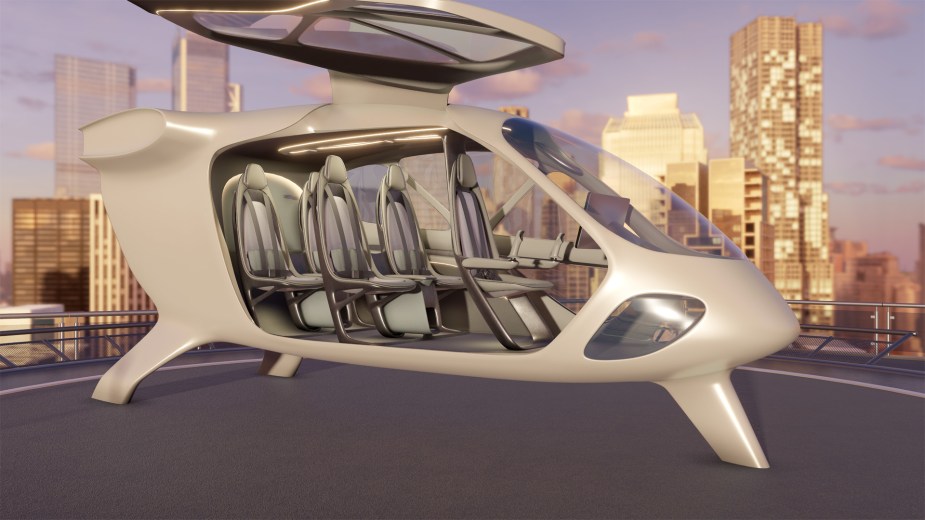
New computer modeling techniques allow more use of biomimicry in designs. Not only is the cabin incorporating the butterfly influences, but so is the overall structure. That starts with the forged carbon fiber airframe.
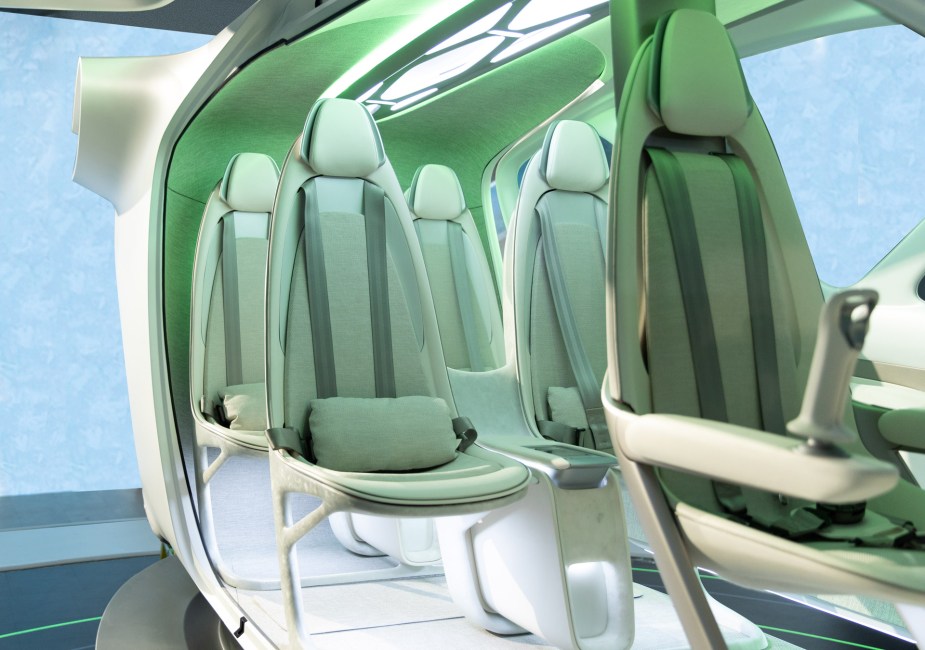
Using recycled carbon fiber reinforced plastic saves substantial weight. “Recycled” is the keyword. Other sustainable sources include plant-based leather on the seats and responsibly-sourced wood panels. Even cast-off pieces from the construction of the airframe are used for the seat frames.
Hyundai is looking at hydrogen power, but is that good?
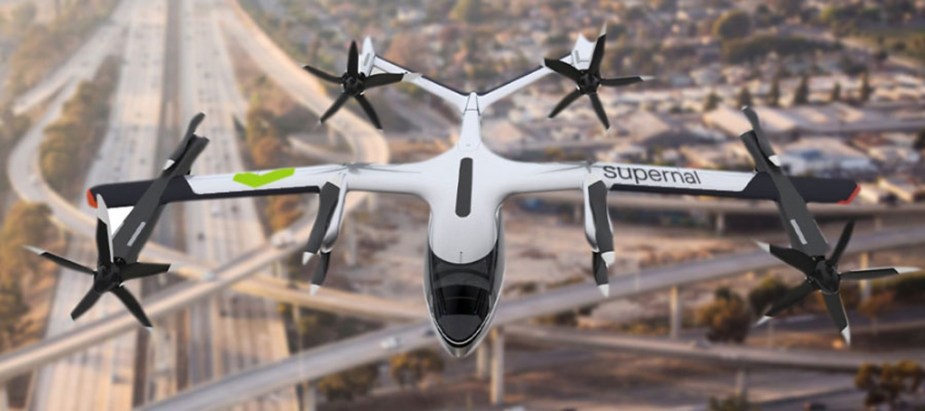
Because it will be battery-operated, the air taxi can only be up for short hops. But hydrogen is being considered for longer flights. Also, Supernal is developing a larger VTOL aircraft. This would be for carrying cargo and passengers longer distances.
Hydrogen’s advantages over electric power are weight savings and the aforementioned longer ranges. But it also has its downsides, like being costly to make. And it uses fossil fuels to extract from the water. Storing it and delivering it to dispensing facilities is also expensive, and a bit dangerous. It’s not the safest energy to use.
The example Hyundai gave for a possible hydrogen-powered VTOL is the route between Los Angeles and Disneyland in Anaheim, California. Hyundai estimates that would be a 24-minute flight from takeoff to landing. By car, during rush hour, that could take up to two hours.
Why is Hyundai partnering with Rolls-Royce?
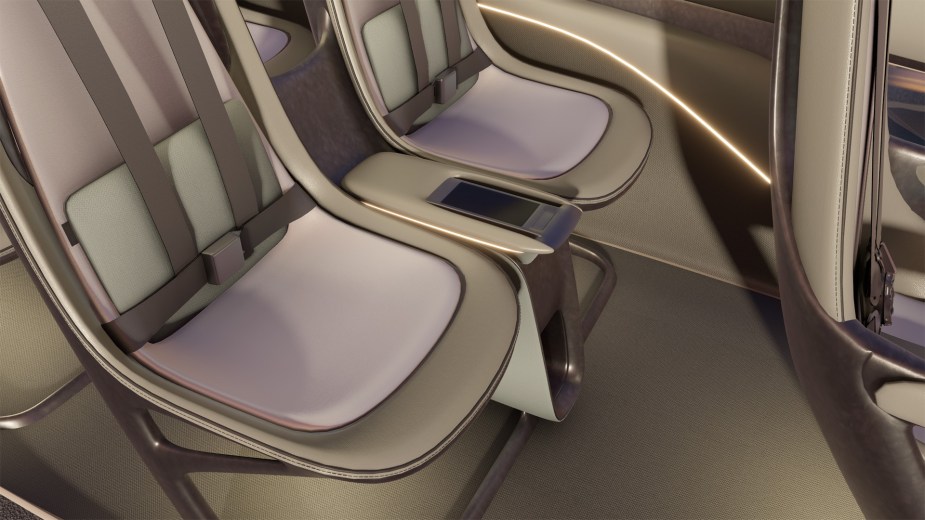
To that end, Hyundai also took the opportunity to be at the Farnborough Airshow to announce a partnership between it and Rolls-Royce. As you know, Rolls-Royce designs and manufactures jet aircraft engines. Companies like Airbus and Boeing use them. Supernal hopes to accelerate its ambitious plans with Roll-Royce aiding in the development of hydrogen propulsion systems.
Around 2030, the first fuel cell flights will take place. And the flying taxis? We expected them to be ready for the Los Angeles Olympic Games in 2024. Being next year, we don’t know if Supernal can make that date, but we’ll be looking up to catch a glimpse if it does.



